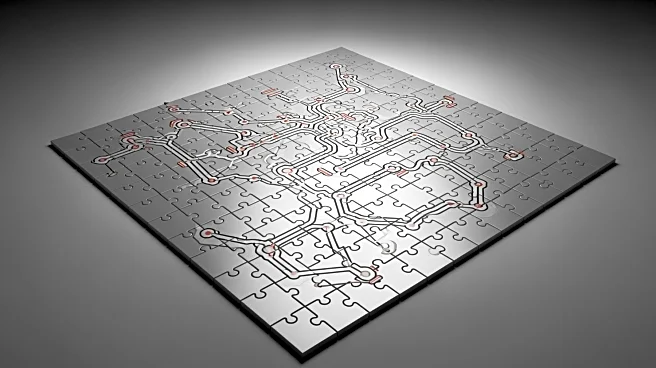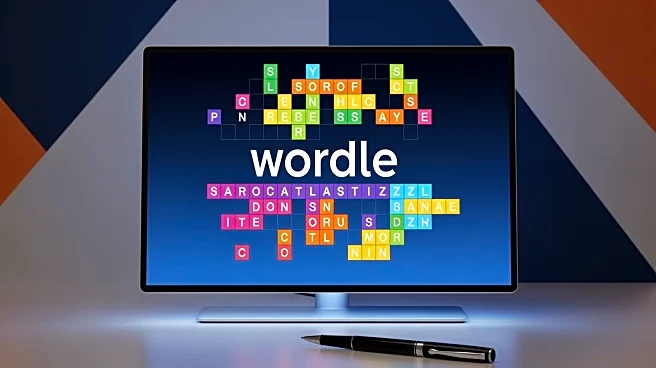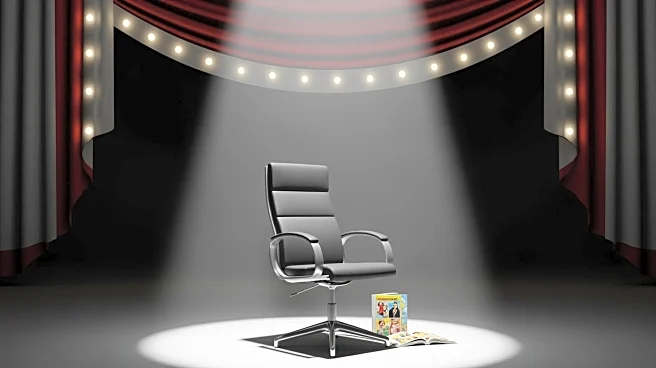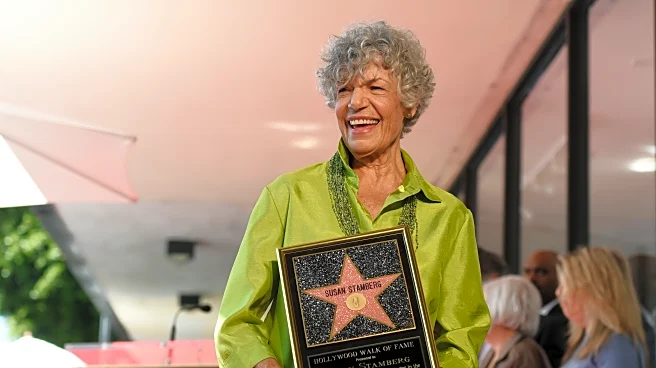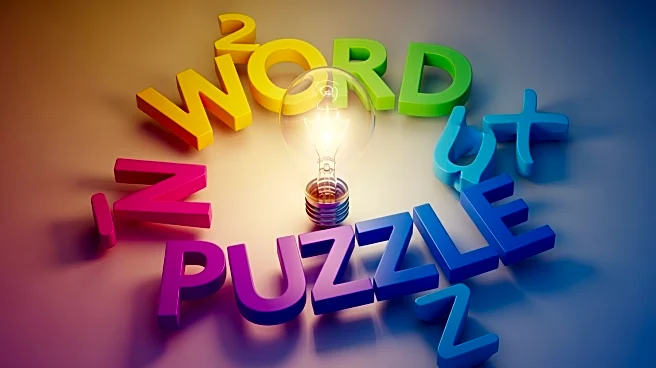What's Happening?
The New York Times' Connections puzzle, which debuted in June 2023, continues to captivate players with its unique format. The puzzle requires participants to identify thematic connections among four groups
of four words, with a limit of four mistakes allowed. The October 18, 2025, edition, Puzzle #860, features categories related to movement, athletic activities, Hollywood, and transactions. Each category is represented by a color: yellow for movement, green for sports-related terms, blue for prolific actors, and purple for homophones of synonyms for 'vend'. The puzzle provides hints to guide players, such as associating the yellow group with the 'Speedo Guy' from 'Bob's Burgers' and the green group with team games on the court.
Why It's Important?
The Connections puzzle is significant as it represents the New York Times' ongoing efforts to engage readers through interactive content. By challenging players to think critically and make connections, the puzzle not only entertains but also stimulates cognitive skills. This type of content can enhance reader loyalty and attract a diverse audience interested in both traditional news and interactive media. The puzzle's popularity underscores a growing trend in media consumption where interactive and gamified content plays a crucial role in audience engagement strategies.
What's Next?
As the Connections puzzle continues to gain traction, it is likely that the New York Times will expand its interactive offerings to include more diverse and challenging puzzles. This could involve collaborations with game designers or the introduction of themed puzzles tied to current events or cultural phenomena. The success of such initiatives could influence other media outlets to develop similar interactive content, further transforming the landscape of digital journalism.
Beyond the Headlines
The rise of interactive puzzles like Connections highlights a shift in how audiences engage with media. It reflects a broader cultural trend towards gamification, where elements of game design are used in non-game contexts to enhance user engagement. This trend has implications for educational tools, marketing strategies, and even workplace productivity, as organizations seek to leverage the motivational aspects of games to achieve various objectives.
